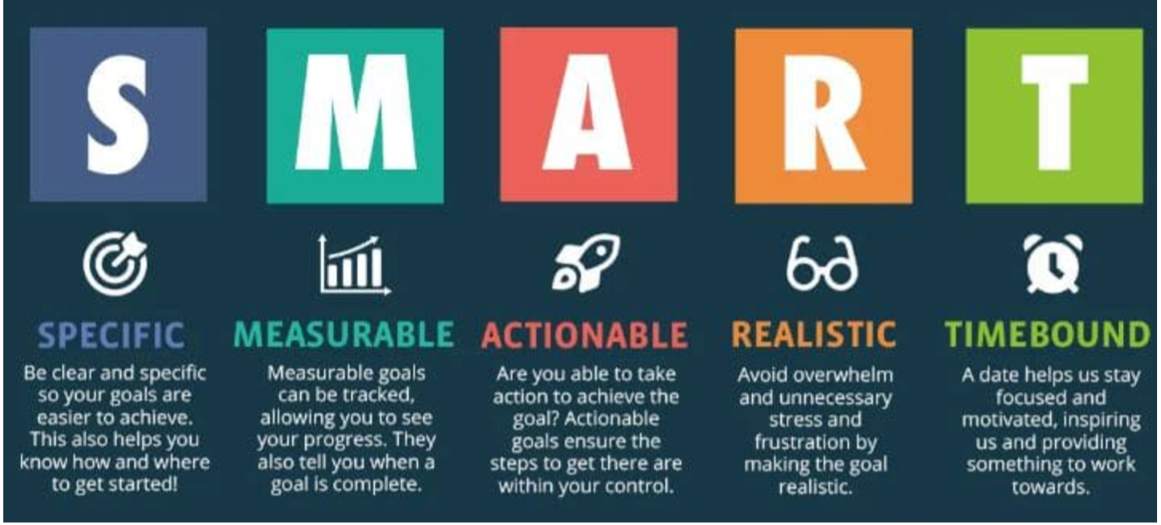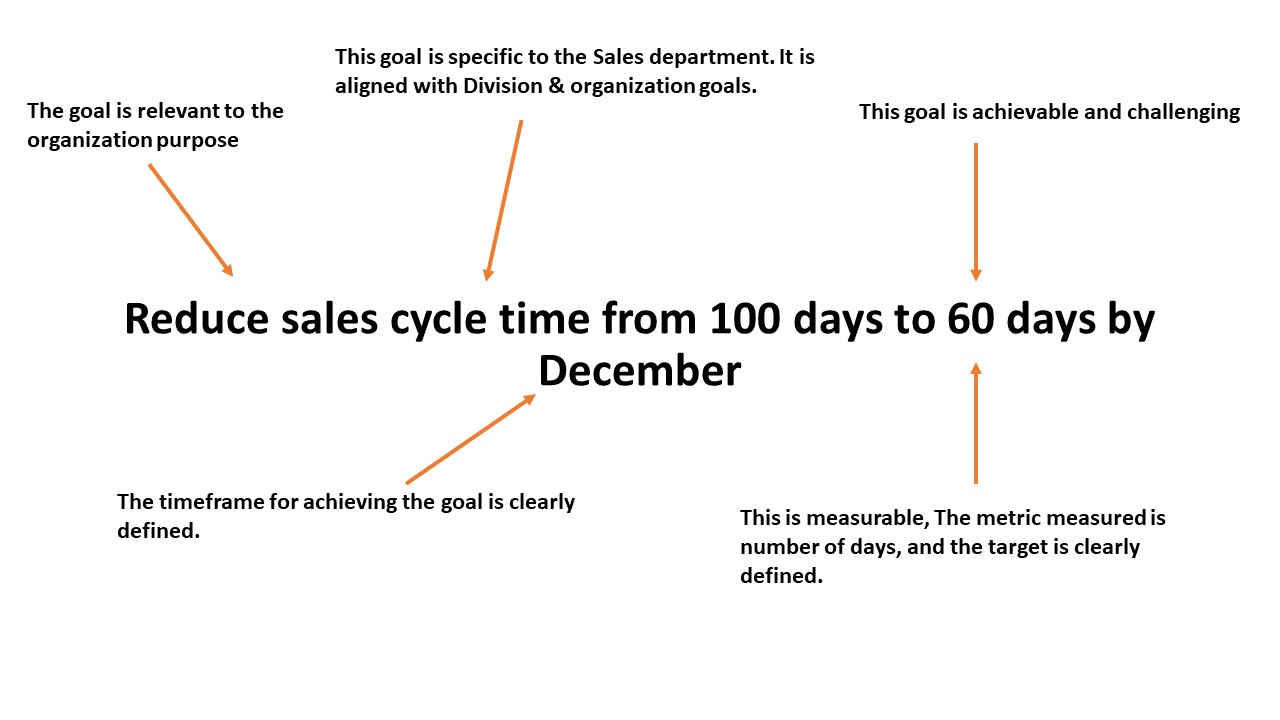"It is no rocket science, but learning is mostly done on the job. Managers who know how to set SMART goals for their teams get more engagement and performance in return."
SMART GOALS, AGAIN?
SMART goals aren’t new. As a matter of fact, learning how to set SMART goals is pretty much the number 1 rule taught in management class. Yet too many professionals in the corporate world know what is SMART without getting a full grasp on it. As a result the objective setting process often results in lack of engagement for the teams. Here are the common reasons why objective settings fail to meet its expectations :
- Managers see the process as very time consuming.
- Once objective are assigned, there is no monitoring done by management.
- Objectives are not realistic enough or in direct relation to the actual job.
UNDERSTAND SMART
So let’s get this straight: A SMART goal…
- Is not a KPI – Learn the difference between Smart goals vs KPIs & OKRs
- Is not an Individual development plan
SMART is :
KNOW THE DIFFERENCE BETWEEN PERFORMANCE GOALS AND DEVELOPMENT GOALS
Performance Goals are :
- Related to job responsibilities and deliverables
- Aligned to higher-level goals
Development Goals are:
- Learning-oriented
- Support higher-level performance in the employee’s current job and career advancement
Example of Performance Goal
"Reduce churn rate for product Y by 3% by the end of the first quarter."
Example of Development Goal
"Follow IDP Training, then train all managers on how to make skill development plans (IDPs) by the end of Q2."
Here is a breakdown :
GOAL SETTING IS MANAGEMENT RESPONSIBILITY
Your success as a manager depends on goals you are setting up for your team. You must go beyond yearly objective settings and breakdown yearly goals into a achievable and understandable steps. For development goals, you must understand your team’s career expectations, skills development and training needs to better satisfy performance and engagement all at once.
If you are a business owner, goals help you breakdown your vision into understandable and actionable objectives for the entire organization. Because goals need to make sense for the ones working towards them, SMART goals must be communicated properly to the teams in order to yield the best outcomes.
TOP TIPS BEFORE YOU START SETTING GOALS
1. Clarify your organization goals / division goals / department goals.
Start from the strategy in order to better cascade them to your teams.
Example of organization goals : Improve the company’s customer service by 10% by the end of the year.
2. Know your team
Understand your staff’s ambitions, career objectives and development needs. Make sure you can align goals with your personnel expectations during regular one on ones with your team.
Setting up a SMART goal is not a one-way street and you need your team engaged. Ie for development goals, you need to make sure assignments are in line with subordinate career path etc. In other words, you cannot make a SMART action plan just by yourself and without a minimum of understanding about your employee’s wants & ambitions.
3. Get your team involved from start to finish!
It is not a one-way street. Do not just rely on a top-down approach to formulate goals. “Just” cascading a goal is likely to not make sense to your subordinates. Think about what smart goal will make sense for your subordinate and how is relevant to your organization/division/department goals. Get your team involved!
4. No SMART goals without SMART action plan
Whenever SMART goals exist, SMART actions plan follow. Managers shall support the team and detail “How” goals will be met : What are the milestones? What are the in-between deliverables? Who will get involved? etc
5. Set a monitoring framework
Through the process of one on ones set the monitoring framework that suits best your management style and your employee needs. During those regular exchanges, Give and receive feedback to have employee grow and build on performance.
IMPLEMENT THE 3*3*1 APPROACH
3 Goals
Pursuing anything more than 3 goals at a time can be counterproductive and your employees may loose their focus. On the other hand, too few goals are not challenging enough and you may not leverage your employee skills to produce performance your organization. Keep in mind, employees target more than one skill development for the pursuit of their career path.
3 is also a realistic target for a manager to commit. Make sure concrete action plans are addressed for those 3 goals.
3 Months
Remember, one of the most common cause why objective setting fail is lack of monitoring. 3 months provides learner enough time to learn through active learning, and help him put into practice the main takeaways of the learning without procrastinating. Bear in mind that skills development is a long term process. Your duty as manager is to lay out the path of success with achievable chunks.
A 3 months timeline is best for team engagement and performance. Make sure to monitor the objective through monthly one on ones.
1 feedback from other
Think of this as a guideline to include at least Another person to provide feedback. There is no real limit to how many people you want to take part in the development goal.
1 feedback from other doesn’t need to be the learner’s direct superior. We recommend at least one person should act as the learner’s source of feedback. Why is that? Imagine your want to improve a skill, say public communication skills for example. After following a training about how to conduct effective presentations, you have been assigned to go to 3 public speaking events next month to practice public speaking. In this scenario, at least one person from the audience could give you a feedback after each of your public speaking appearance. In this example, the marketing manager or the sales director might be good person to learn with as they are used to perform presentations on a regular basis.
We recommend to choose at least one person that gives feedback depending on :
- His/ Her domain of expertise.
- His/ Her ability to provide constructive feedback.
- His / Her commitment to act as a source of feedback for the duration of the assignment.
EXAMPLES OF SMART GOALS TO HELP YOU GET STARTED
SMART on the job assignments for Sales
- Apply top 3 tactics to influence clients during your next customer meeting
- Meet with HR department in January and discuss 5 future skills your sales department must develop to remain competitive in the next 5 years
- Complete the negotiation training and implement 4 steps to saying NO at negotiation by the end of Q1
- Reduce sales cycle time from 100 days to 60 days by the end of the year.
- Reduce churn rate by 3% by the end of the first quarter.
- Pick 5 written conversation Active Listening tips and practice them for a month
- Set and execute an action plan to reactivate all your sleeping customers in CRM
- Perform value-centric customer meetings for a week, no product features talks
SMART goals for finance
- By the end of the month, work the integration of your Financial systems with your BI tool.
- Produce 5-year digital transformation roadmap including systems, skills required, and ROI expected to CEO by the end of Q3.
- Identify top 5 high risks that will hamper company growth in the coming year, present mitigation plan to CEO by the end of next month.
- Reduce monthly closing by 2 days for next month closing exercise.
- Learn how to craft elevator pitch and practice once per week during meetings with CFO.
SMART goals for Manufacturing
- Engage bi-weekly with engineering and product leaders to ensure upcoming projects are prioritized accordingly
- Hire 3 junior-to-intermediate engineers this quarter
- Ensure there is 3 months of planned work ready to be engineered
- Increase sprint capacity by 10% by next quarter
- Ensure 0% breakdown within the period by rolling out preventive maintenance plan
SMART goals for HR
- Follow IDP training next month, then train all managers on how to make skill development plans (IDPs) by the end of Q2.
- Design 70/20/10 development plans for 5 employees this week and measure post-activity performance after 90 days.
- Craft your Linkedin recruitment campaign and reach a 40 percent Inmail response rate by the end of the month.
- By next week, produce a yearly action plan to update your performance management system (PMS) with the organization’s future skills
- Deliver two scenarios of 3-year workforce planning to CEO by the end of the year
About Huneety
Huneety is Southeast Asia Talent sourcing platform connecting talents to opportunities. We help organizations navigate talent shortages by creating new talent pools of qualified applicants. With Huneety you can quickly find, assess, and select the right talents according to your unique skills, behaviors, and cultural fit requirements.

